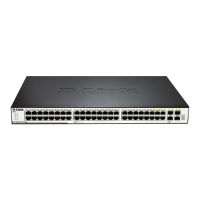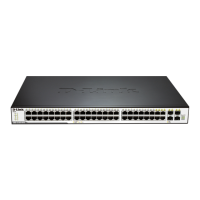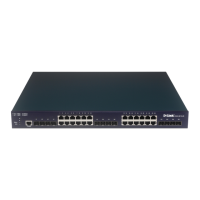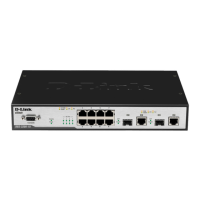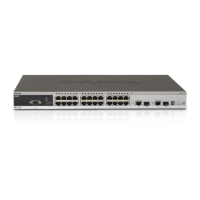xStack® DES-3528/DES-3552 Series Layer 2 Managed Stackable Fast Ethernet Switch CLI Reference Guide
166
delete address_binding ip_mac
Purpose
This command is used to delete IP–MAC–Port Binding entries.
Syntax delete address_binding ip_mac [all | ipaddress <ipaddr> mac_address <macaddr>]
| ipv6address <ipv6addr> mac_address <macaddr>
Description
This command is used to delete IP–MAC–Port Binding entries.
Parameters all – Specifies that all the entries will be removed.
ipaddress - Specifies the IP address of the entry in the database.
mac_address - Specifies the MAC address of the entry.
ipv6address - Specifies the IPv6 address of the entry in the database.
Restrictions
Only Administrator, Operator and Power User-level users can issue this command.
Example usage:
To delete IP–MAC–Port Binding entries:
DES-3528:admin#delete address_binding ip_mac all
Command: delete address_binding ip_mac all
Success.
enable address_binding trap_log
Purpose
Used to enable the trap log for the IP–MAC–Port Binding function.
Syntax enable address_binding trap_log
Description This command, along with the disable address_binding trap_log will enable and
disable the sending of trap log messages for IMPB. When enabled, the Switch will send a
trap / log message when an ARP packet is received that doesn’t match the IMPB white
list.
Parameters
None.
Restrictions
Only Administrator, Operator and Power User-level users can issue this command.
Example usage:
To enable address binding trap log on the Switch:
DES-3528:admin# enable address_binding trap_log
Command: enable address_binding trap_log
Success.
disable address_binding trap_log
Purpose
Used to disable the trap log for the IP–MAC–Port Binding function.
Syntax disable address_binding trap_log
Description This command, along with the enable address_binding trap_log, will enable and
disable the sending of trap log messages for IMPB. When disabled, the Switch will not
send trap / log messages.
Parameters
None.
Restrictions
Only Administrator, Operator and Power User-level users can issue this command.
Example usage:

